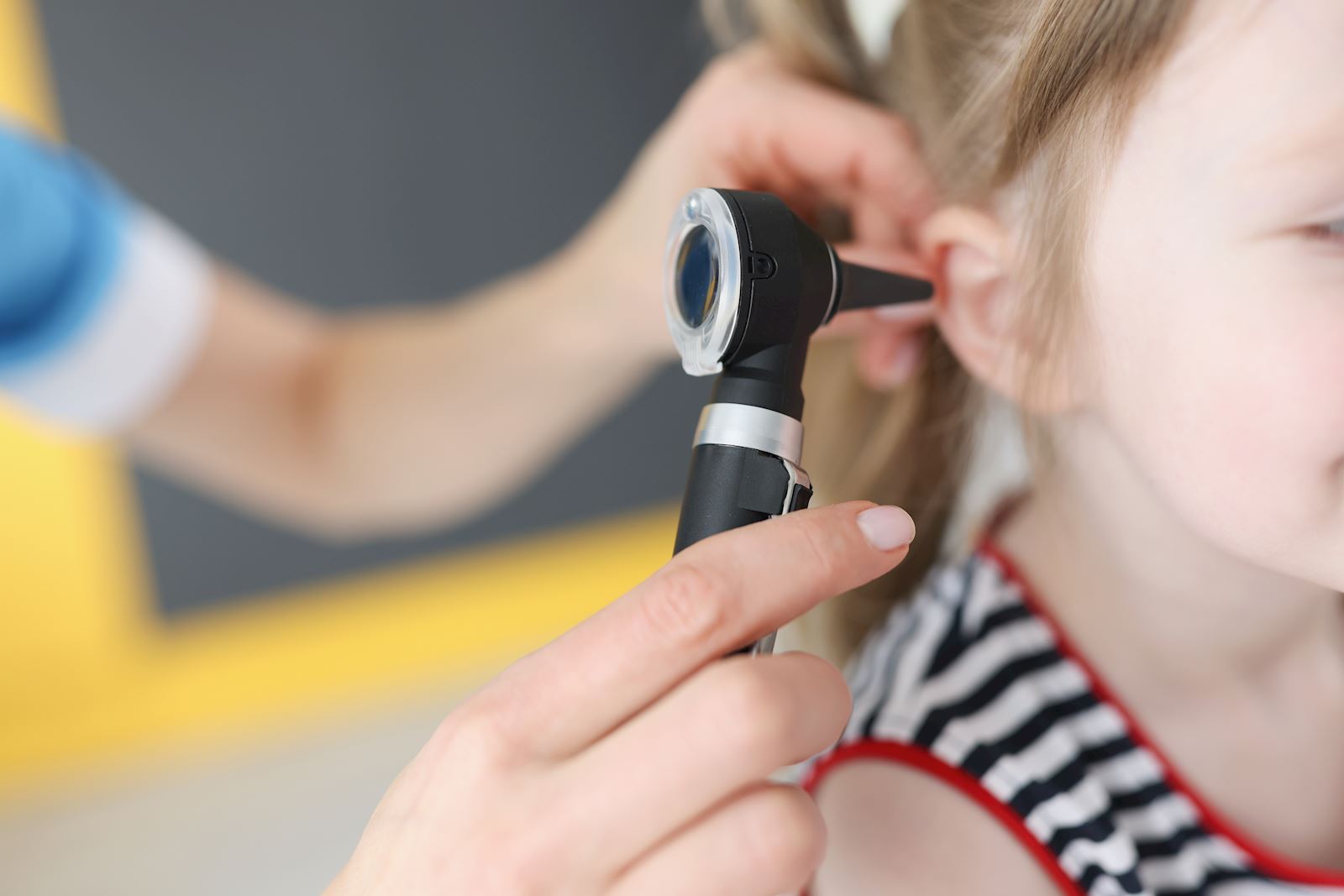There are times in every child’s life where you wonder, “Are they hard of hearing?”
It’s usually in a moment of frustration. They’re not hard of hearing, just hardly listening. Yet a few of every thousand children have true hearing loss, where momentary frustrations are replaced with serious concerns.
Rest assured, hearing loss does not mean your child will lose it all. Or even lose it forever. There’s a broad range of hearing loss in children, with a variety of treatments to match.
The most common type of hearing loss in children is only temporary.
“The most common cause you’ll find in kids is conductive loss,” says Stephanie Miiller, AuD, CCC-A, a West Des Moines audiologist with The Iowa Clinic. “That’s where you have an issue with either the outer ear or middle ear space. But typically, that’s only temporary.”
Conductive hearing loss is most often caused by fluid in the ear. Infection is also a common culprit. And because we’re talking about kids, they may have gotten something stuck inside their ear. As soon as any of these things are cleared, hearing is restored.
“For most kids, it’s something easy to address like fluid, infection, wax or foreign objects,” Dr. Miiller says. “You can drain fluid so the ears can ventilate and function again. Wax and foreign objects can be removed.”
Growths and abnormalities are rarer causes. Those can also be removed to restore normal hearing.
Watch for these signs that your child can’t hear.
It’s hard to tell if an infant or toddler has hearing troubles because they are still developing and can’t communicate with you yet. Believe it or not, it’s even harder to tell the difference between your child tuning you out and them having trouble hearing you altogether. Because as they get older, they develop different ways to compensate and adapt.
At every age, you have to look at other cues.
1. They pull and tug at their ears.
“I would say this is the most common with little kiddos,” Dr. Miiller says. “They just have a tendency to really get in there and dig.”
They could be digging at the wax buildup, wetness or whatever is lodged in their ear. Your child’s ears may be red from all the attention — another sign that the ear issue is not just an itch but a nagging issue.
2. Your young child has trouble sleeping.
Many health issues rear their ugly heads at night. Ear issues are no exception, especially with conductive hearing loss.
“It really causes issues with sleep. They don’t sleep well at night because the fluid pushes up against the eardrum when they lay flat,” Dr. Miiller says.
3. Your infant shows delays in their speech development.
Kids learn how to talk by hearing others interact. They begin to use the words they hear often from parents, siblings and caretakers.
“As children get closer to 1 and 2, you start to see those delays in their speech, and just the overall development of communication,” Dr. Miiller says. “They don’t react to someone’s voice. When you hold them or try to get their attention, they don’t pay attention to you. They don’t focus on your mouth and face. Those could be other indications as well.”
4. Their hearing seems inconsistent.
When your child is a little older and able to understand and communicate, you will notice other cues. They may want the TV turned up louder than the rest of the family. They may hear you fine sometimes but not even register a response to others. When they do, it’s “Huh?” or “What?”
You might think these are normal kid behaviors when they could be signs of unidentified hearing loss.
5. They’ve developed adaptive behaviors.
Turning up the TV, replying “Huh?” and asking you to repeat yourself are all ways kids can compensate for their hearing troubles. Your child may show physical behaviors too. Like sitting closer to a source of sound. Moving their head or “good ear” toward you in conversation. Or watching your face and mannerisms intently to collect visual cues.
It’s always best to start with a hearing test.
A hearing screening is one of the first tests every newborn takes in the hospital. Once your child hits school age, they will again have standard hearing tests every year throughout elementary school.
“The standard is pure tone audiometry, which is where kids raise their hand when they hear the beep. That’s the main test we do in the clinic as well,” Dr. Miiller says.
Pure tone audiometry is the standard for older kids and adults. Younger children aren’t capable of understanding the test and responding to the beeps, so there are different, age-appropriate hearing tests:
- Otoacoustic emission test (OAE) – The universal newborn hearing screening used in hospitals, OAE sends sound into a child’s ear. How the sound is reflected back tells audiologists whether or not there is hearing loss.
- Auditory Brainstem Response (ABR) – If your child failed the OAE (in the hospital or otherwise), ABR is the next step. Electrodes placed on the head transmit clicks and tones into the brain. The readings show the actual degree of concern of hearing loss, rather than the simple pass/fail of an OAE test.
- Visual reinforcement audiometry – Similar to pure tone audiometry, children as young as 6 months old sit in the sound booth with their parents. Instead of headphones and hand raising, tones are piped in through a speaker and an audiologist watches to see whether your child turns their head toward the sound.
- Play audiometry – This test turns pure tone audiometry into a game. Your child is prompted to respond to beeps by dropping a block into a bucket. When they do it correctly, they’re praised to reinforce the response and encourage the play.
Temporary or not, you have treatment options.
For obstructions, removal is the only route. You have to take out the wax, object or deformity that’s hindering hearing. Other causes of hearing loss have a bit more flexibility with treatments.
“If it’s fluid or infection, typically the first step would be antibiotics. You always try those first,” Dr. Miiller says. “But if it’s a long-term history of fluid — if you’ve tried 3 or 4 antibiotics and it’s chronic — our next step is to proceed with tubes.”
For severe and permanent types of hearing loss, hearing aids are a definite need. There’s just no better option. With milder hearing losses, they may not be necessary.
“If your child is right on the borderline or only has mild loss at one or two frequencies, you can try other things,” Dr. Miiller says. “Something as simple as preferential seating in the classroom makes a big difference. If they sit closer to the front or with their better ear toward the teacher, they do much better than in the back where they have ambient background noise interfering.”
If you or a teacher have seen signs of hearing loss, or your child failed a hearing screening at school, you can schedule hearing testing with an audiologist. And see an ear, nose and throat doctor, all in one visit.
“At The Iowa Clinic, ENTs work with audiologists who conduct hearing tests at the same visit as your full ENT evaluation,” Dr. Miiller says. “Do they need tubes? Hearing aids? Together, we can decide what those next steps are.”


